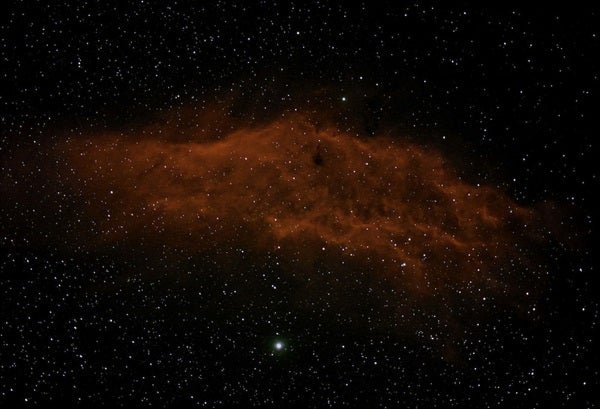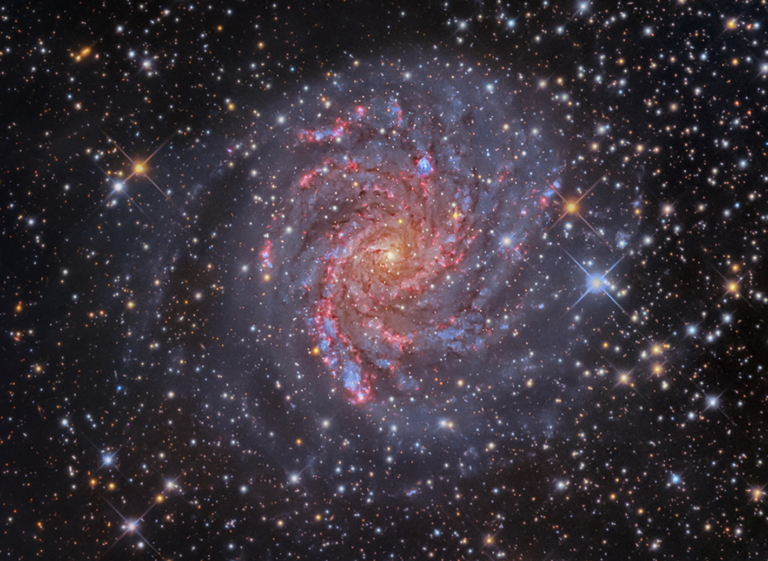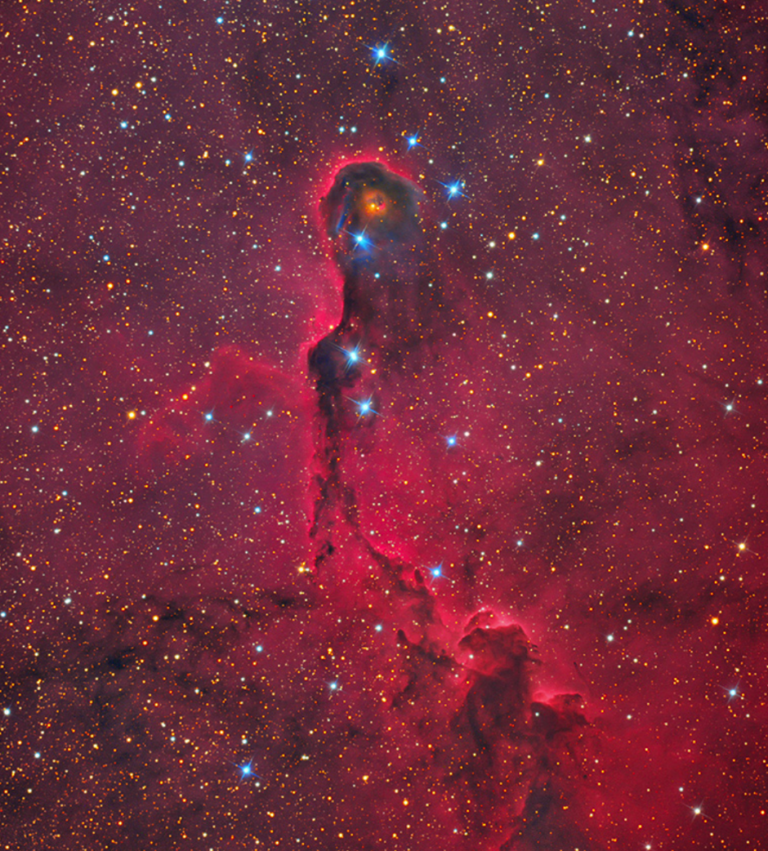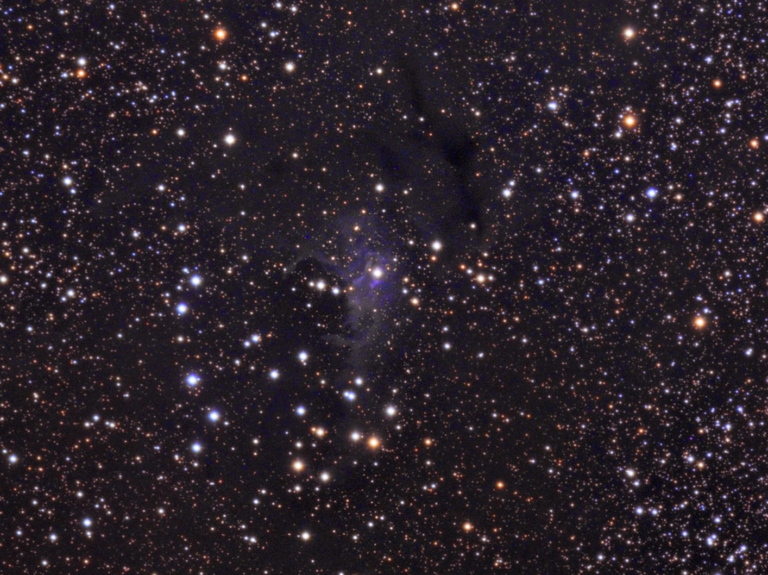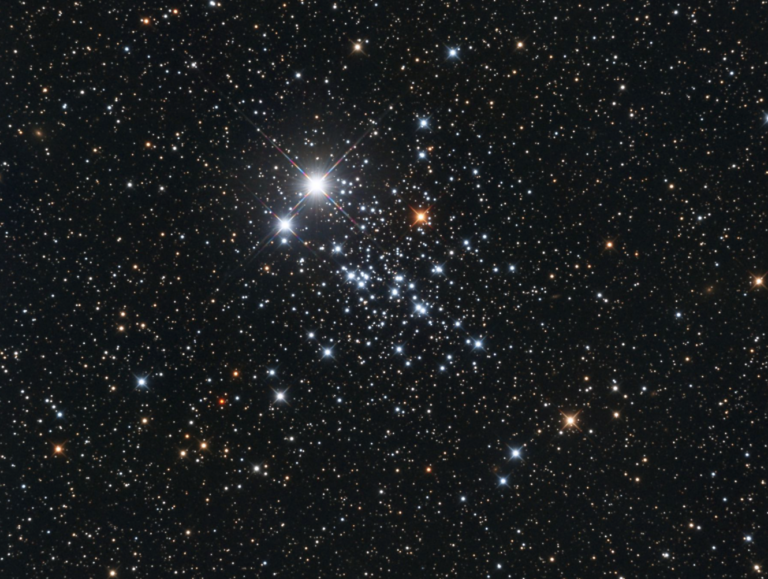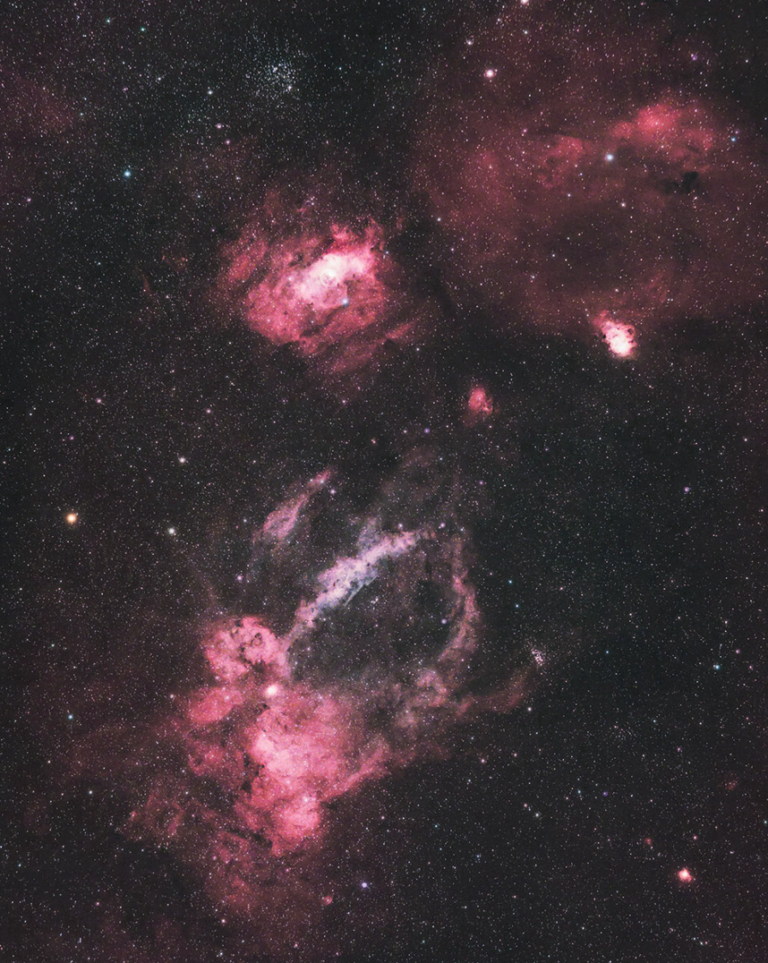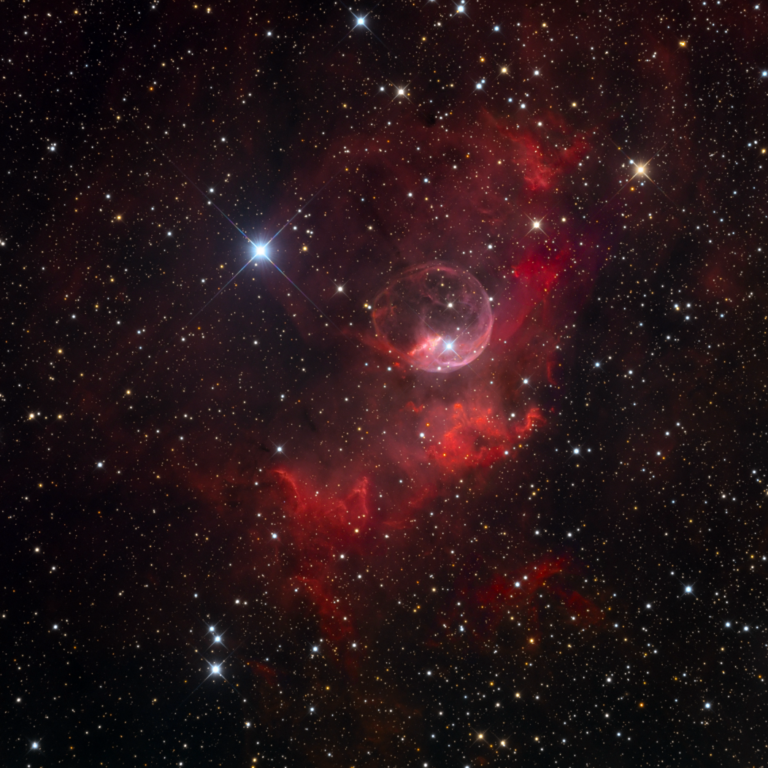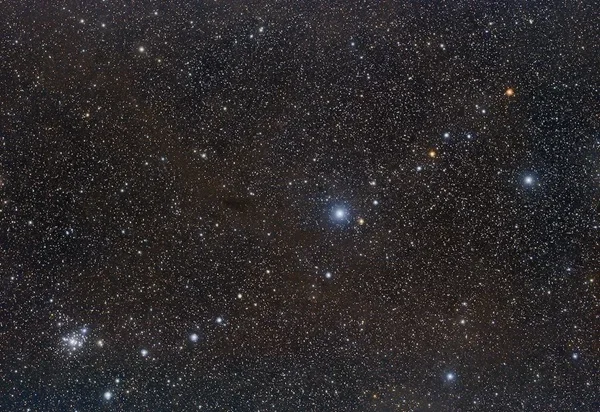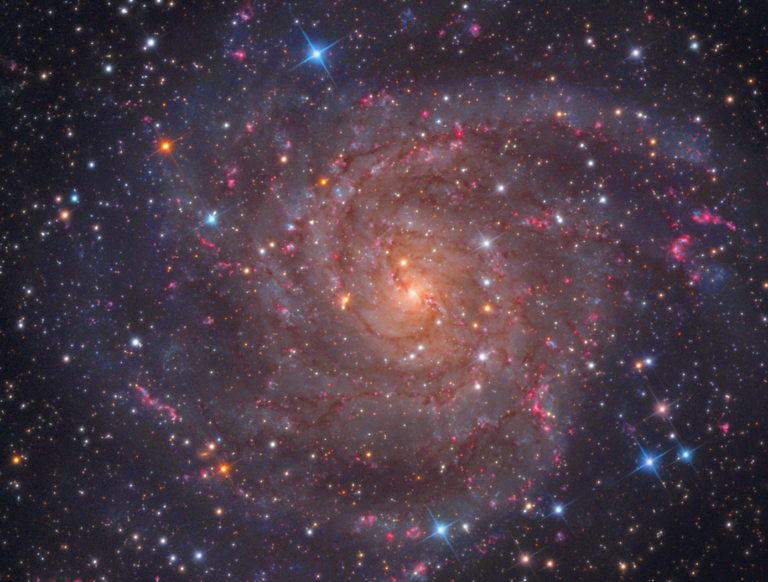Today’s brightly lit cities aren’t usually the places where new deep-sky objects are discovered, but in the 19th century, gas streetlights didn’t produce much light pollution. In November 1885, Vanderbilt University astronomer Edward Emerson Barnard visually discovered the California Nebula from Nashville, Tennessee, with a 6-inch refractor. One of the pioneers of astrophotography, Barnard is perhaps better known for his catalog of dark nebulae.
Designated NGC 1499, the California Nebula is an emission nebula stretching 2½° long and ½° wide. Its apparent magnitude of 6 suggests it can be seen in small optics. But this nebula’s expansive and diffuse nature gives it a low surface brightness, making it difficult or impossible to see except under the darkest skies (i.e., where magnitude 6.5 stars are visible with the naked eye).
As you might expect, the California Nebula is relatively close to Earth — estimates put it between 1,000 and 1,500 light-years away. That places the length of this hydrogen cloud somewhere around 100 light-years from end to end. For comparison, the famous Orion Nebula (M42; see #19) is about 1,600 light-years distant but only 24 light-years in diameter.
HII regions such as NGC 1499 are always illuminated by nearby hot, young stars. The California’s source of ionizing energy is Xi (ξ) Persei, which sits on the nebula’s Nevada side (what would be the state’s eastern border). Also called Menkib, this 4th-magnitude star is classified as O7.5 and has a surface temperature of 62,540 degrees Fahrenheit (34,730 degrees Celsius) — one of the hottest naked-eye stars. Its distance is 1,200 light-years.
To improve your odds of seeing NGC 1499, you will need the right skies and equipment. As mentioned, perfect skies are a necessity; a wide field of view is important to pick up the entire nebula, though a smaller field can bring out one edge. A filter that enhances Hydrogen-alpha (Hα) wavelengths and suppresses airglow will best show off this gas cloud.
Make sure to explore Astronomy’s full list of 101 cosmic objects you must see. New entries will be added each week throughout 2022.
To get the latest astronomical news and observing content delivered directly to your door, subscribe to Astronomy magazine today!

